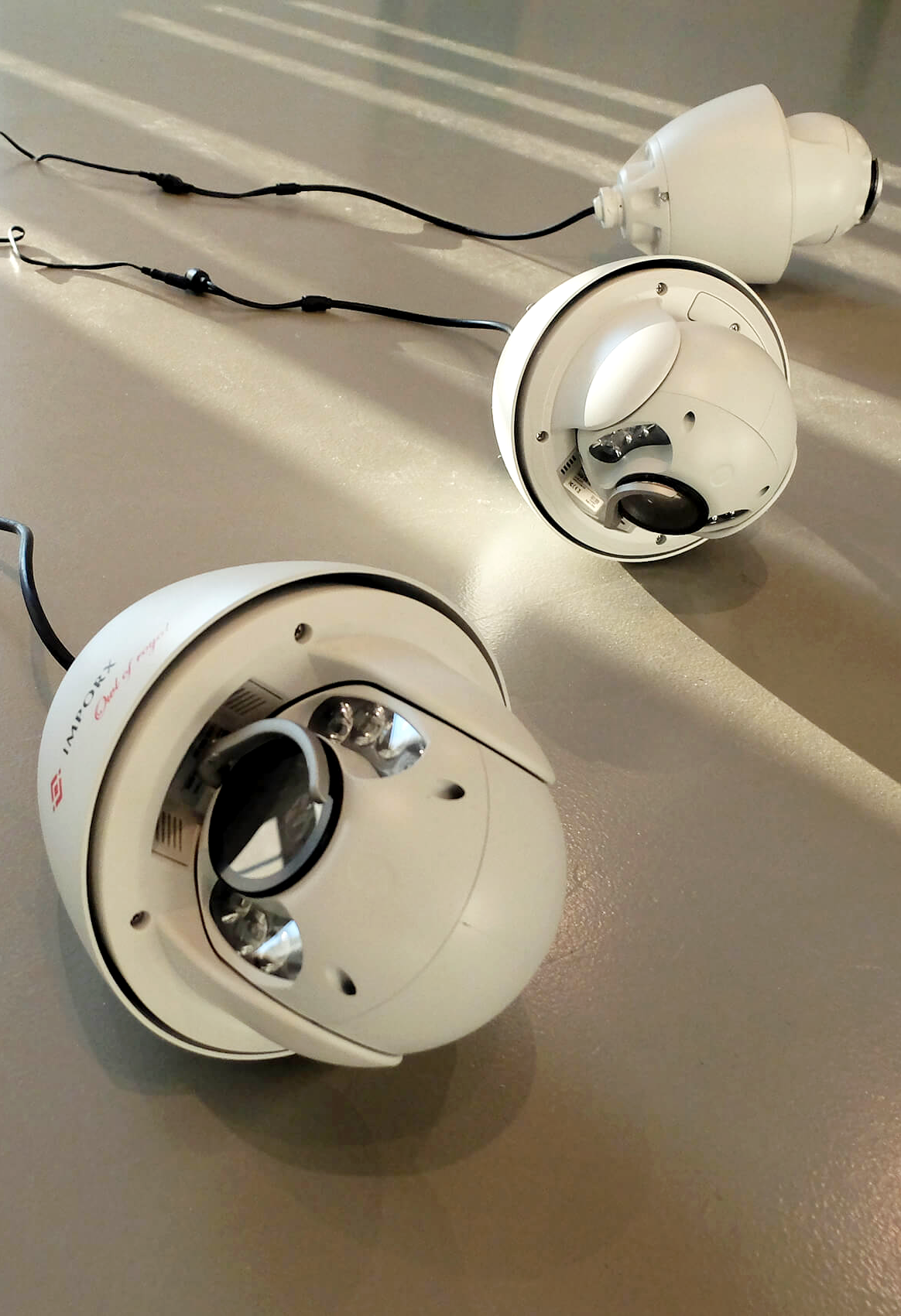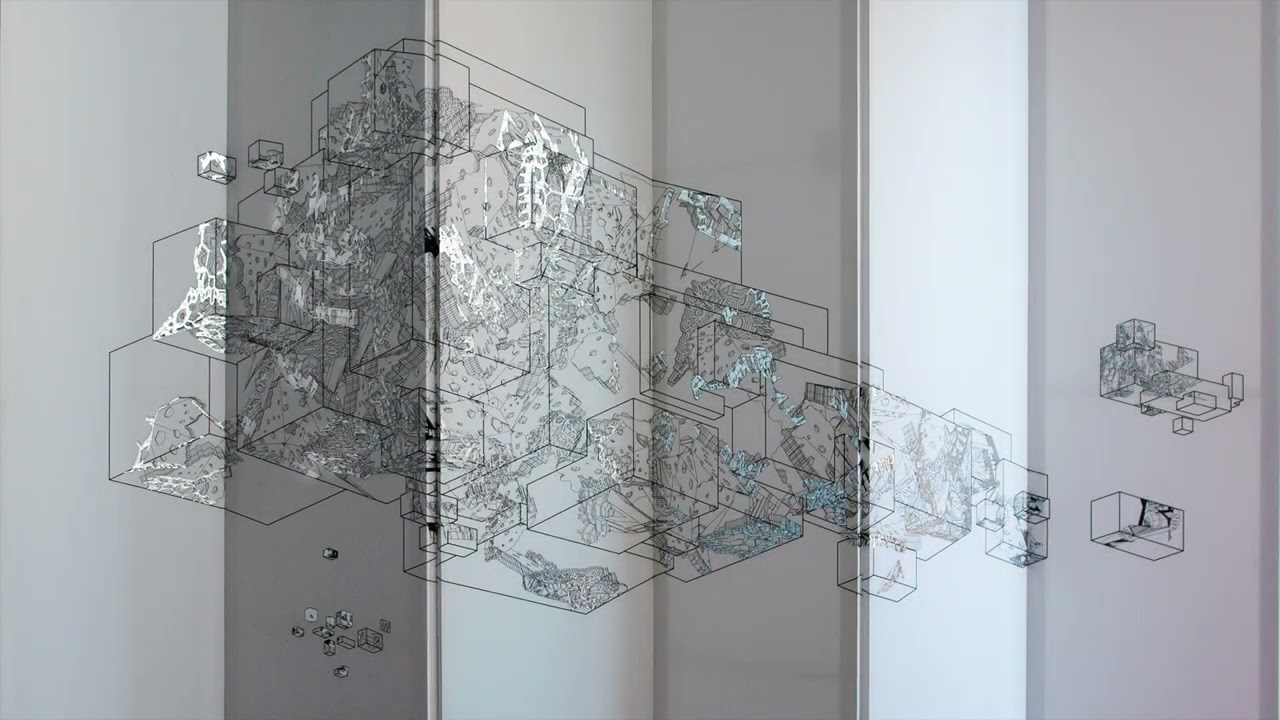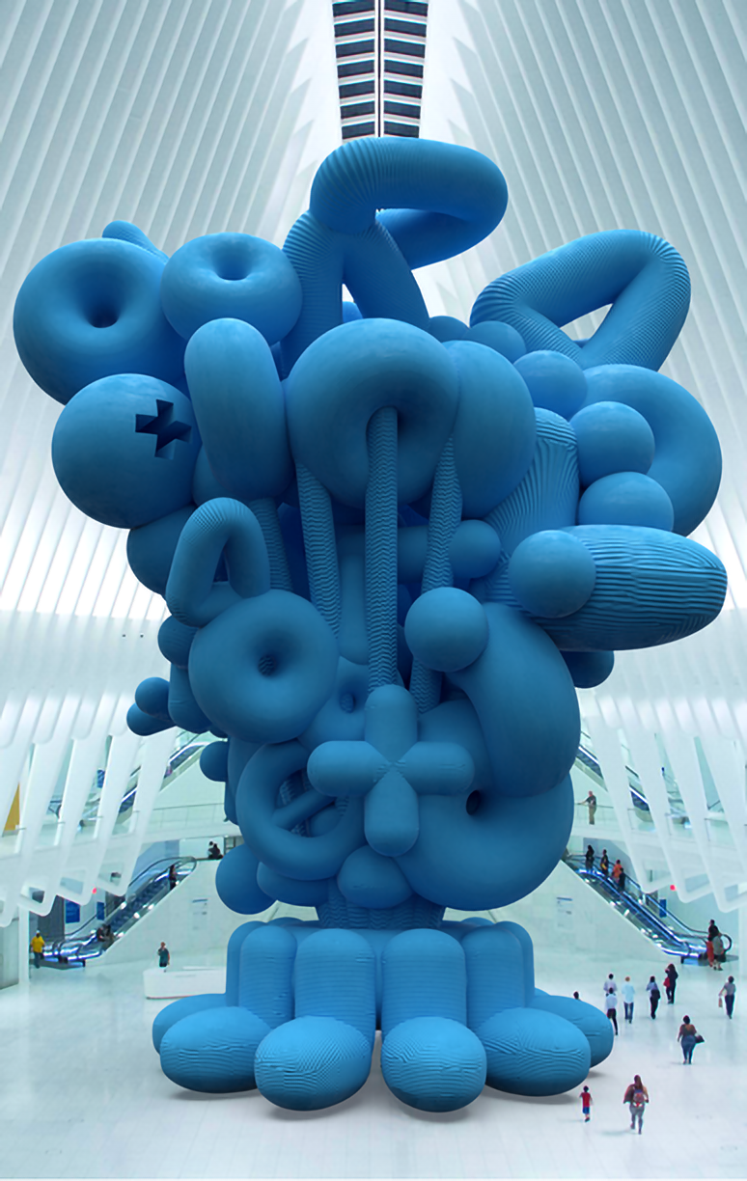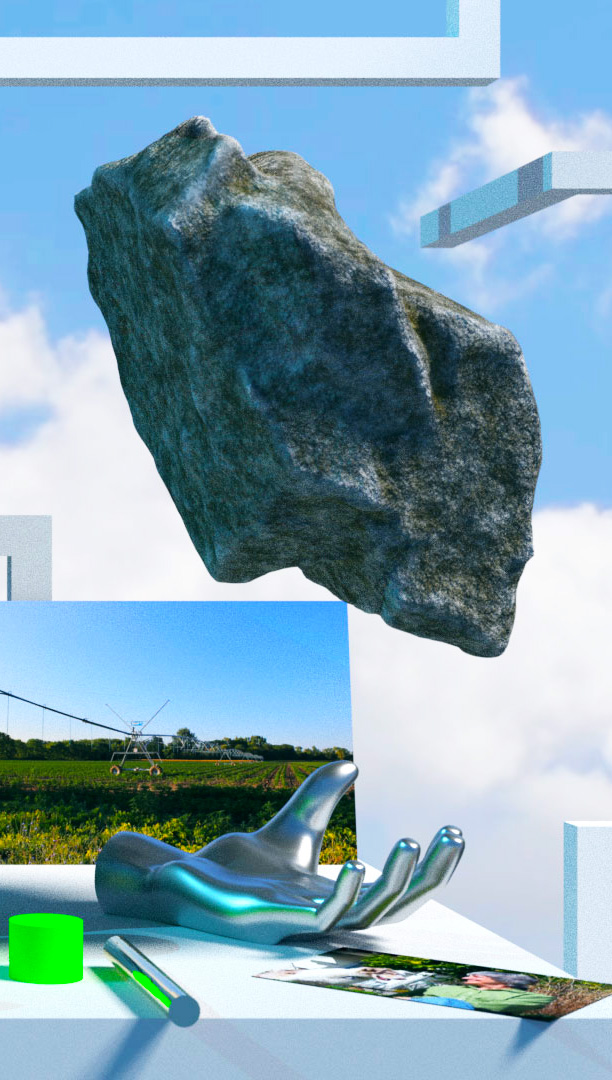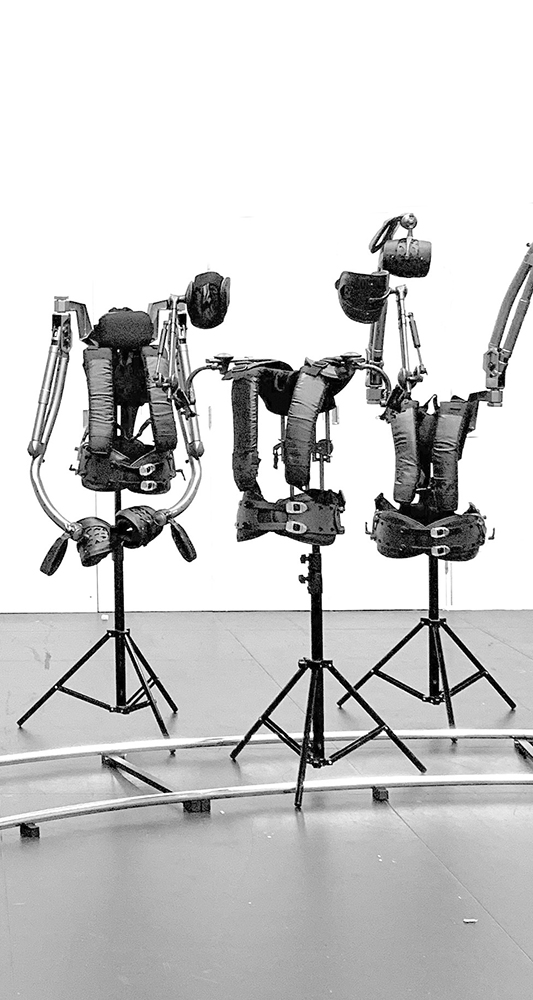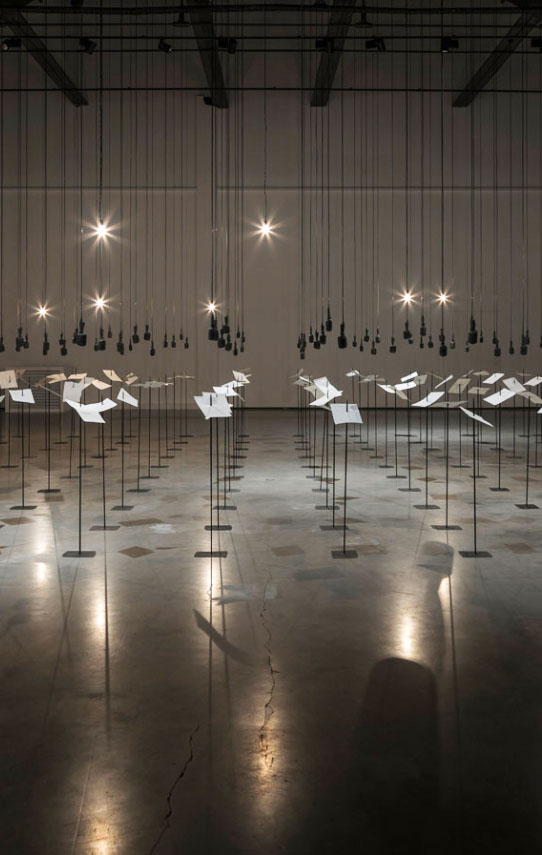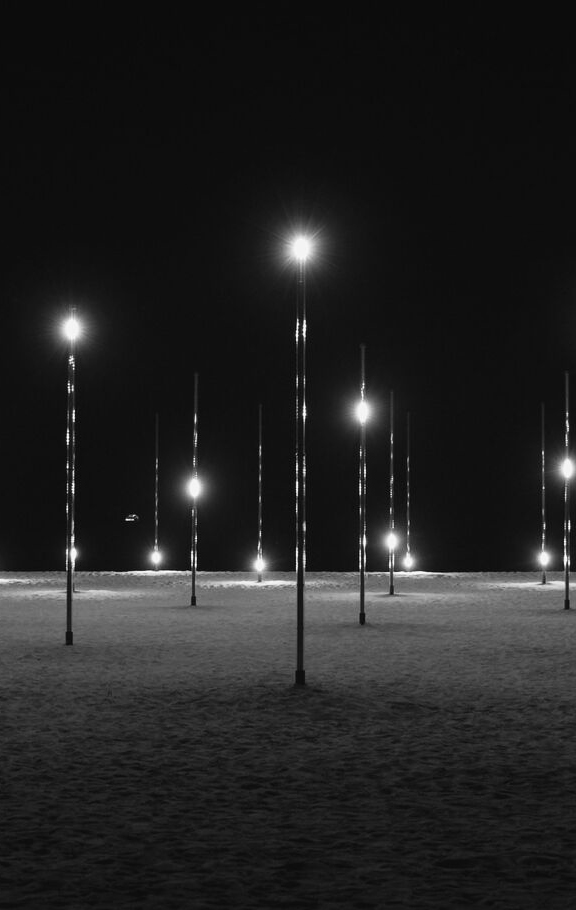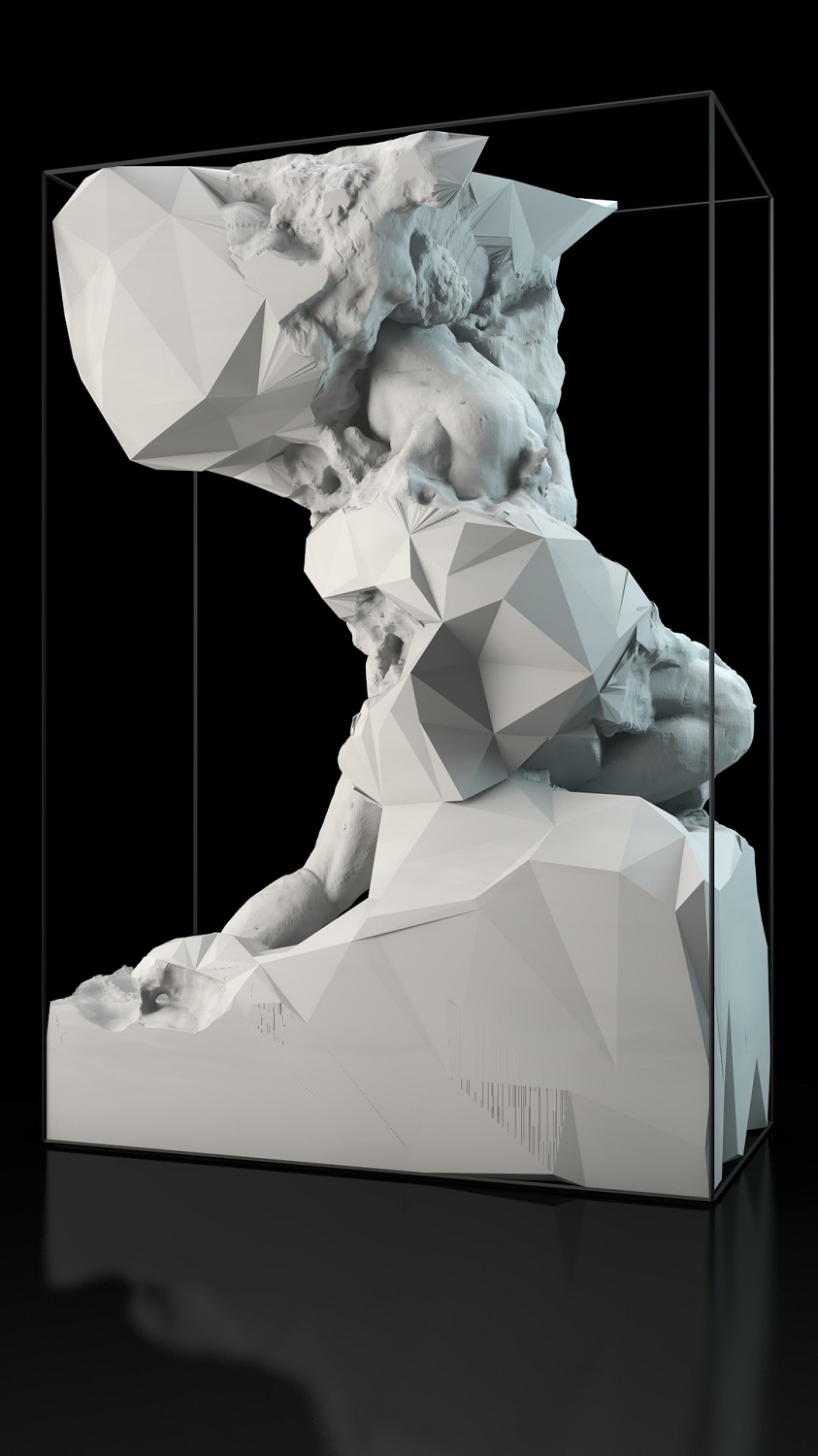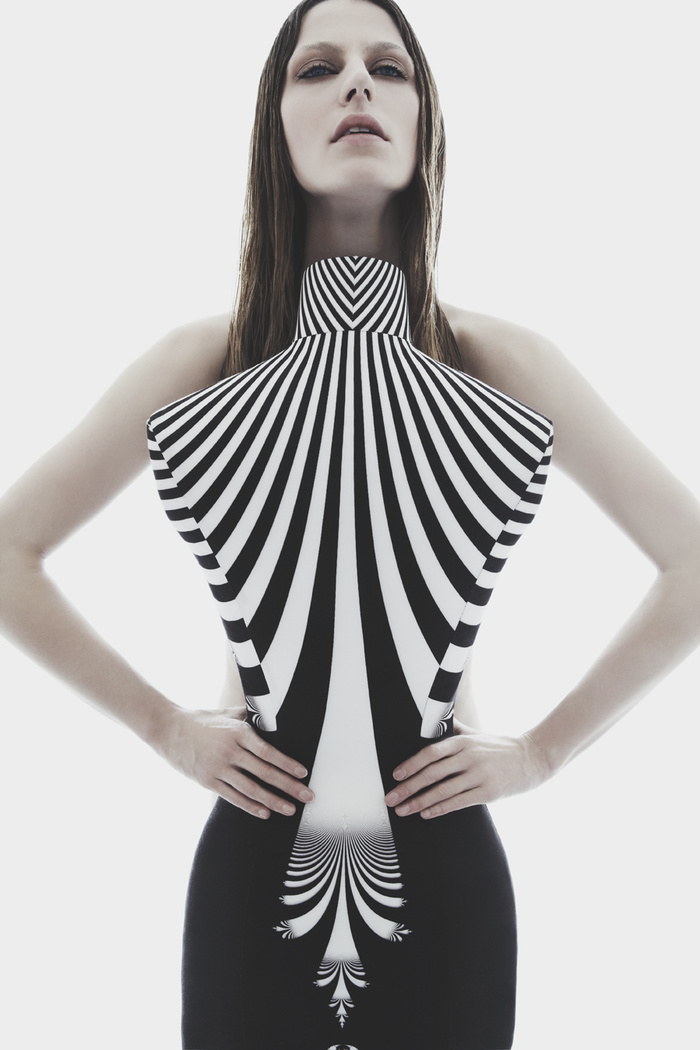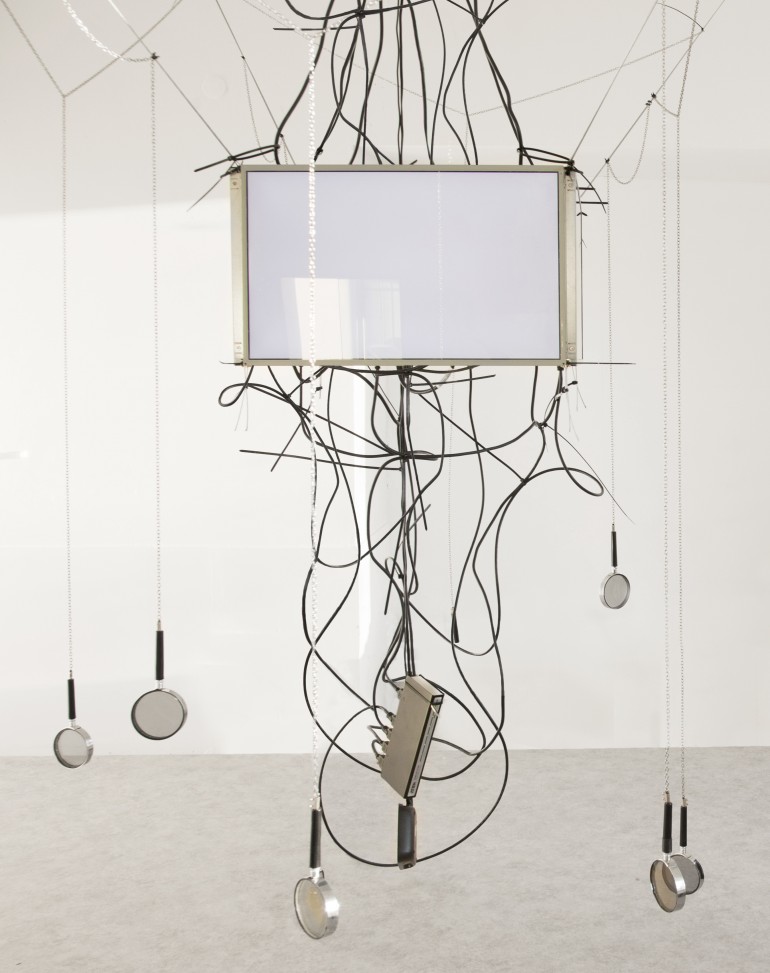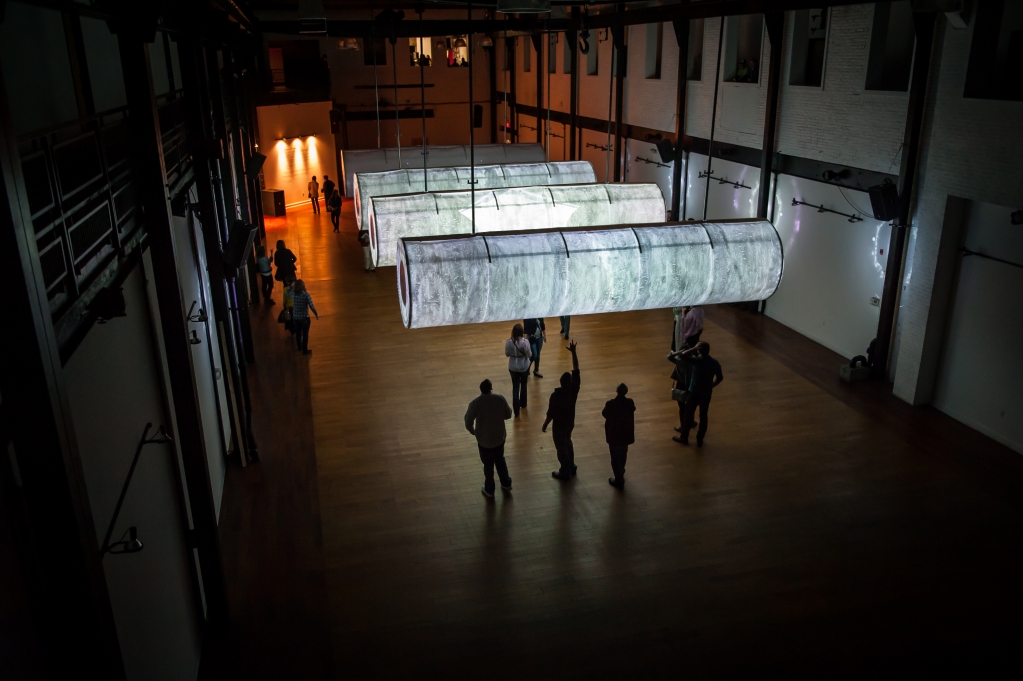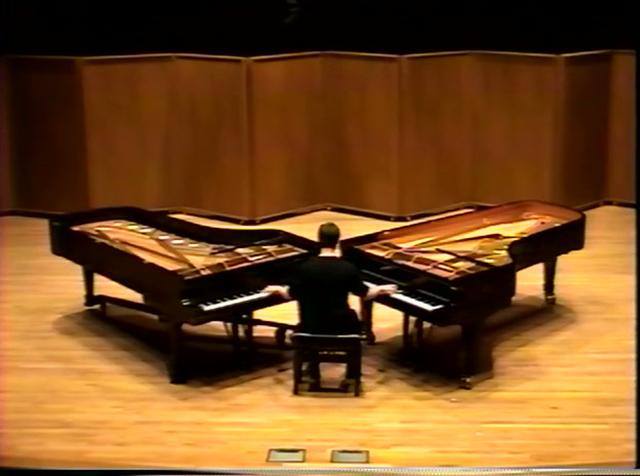
DAN CORSON
Empyrean Passage
Empyrean Passage is reminiscent of both a theoretical black hole and portal into the celestial worlds. Empyrean (notice the pyre in the word) is the final and fiery level of heaven as depicted by Dante- or aether in Aristotle’s cosmology. The form is constructed like a giant hoopskirt and gracefully moves in the wind creating a gossamer lighting effect overhead. While this project is an oculus to the heavens, more focus is usually paid to more terrestrial stars in this neighborhood.The interior of the spiral is designed with aqua and black dashes. The dashed interior creates optical effects with the eyes and at certain times of the day shifts your perception of the sky’s color.This project utilizes extremely “green” electroluminescent lighting. The entire sculpture consumes less electricity than a household nightlight and operates on a photo cell. Special thanks to the City of West Hollywood, Andrew Campbell, Maria Lusia de Herrera, Greg Coons, Glen Bundrick / Luminous Film.
